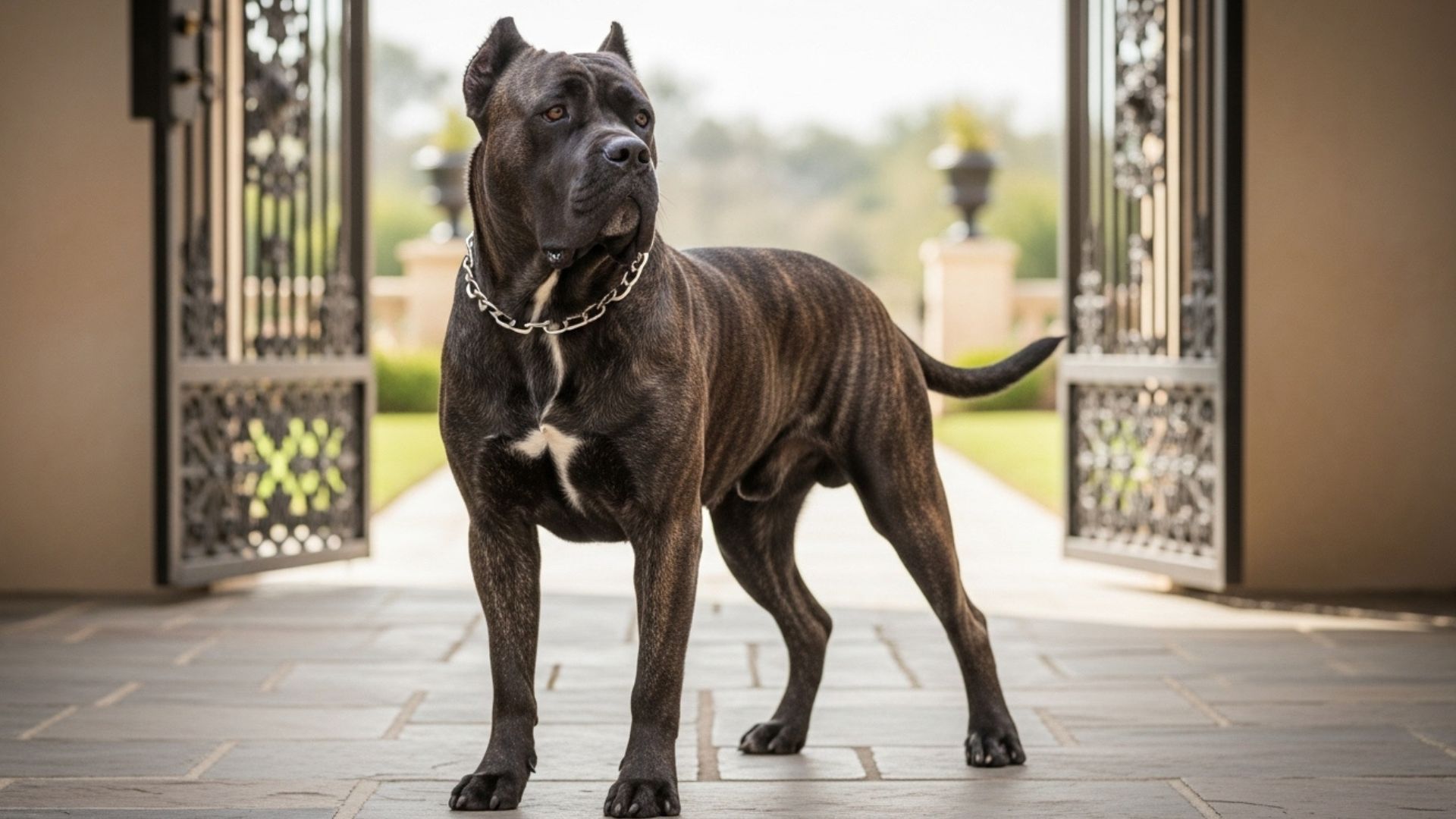When it comes to protecting your home, size matters. Large guard dog breeds are often the best choice for guard dogs, as they possess both the physical strength and protective instincts needed to keep intruders at bay.
These guard dog breeds are not just big in size, but also have a strong sense of loyalty and vigilance. Whether it’s a watchdog on duty or a fierce protector, large breeds are often chosen for their ability to deter threats.
In this article, we’ll explore some of the best guard dog breeds known for their guarding abilities, highlighting their unique traits, personalities, and how these protection dogs can provide peace of mind for you and your family.
Large Dog Breeds Best Suited As Guard Dogs
Find out the strongest and most popular guard dog breeds that are naturally suited for guarding your home and family.
1. Great Dane
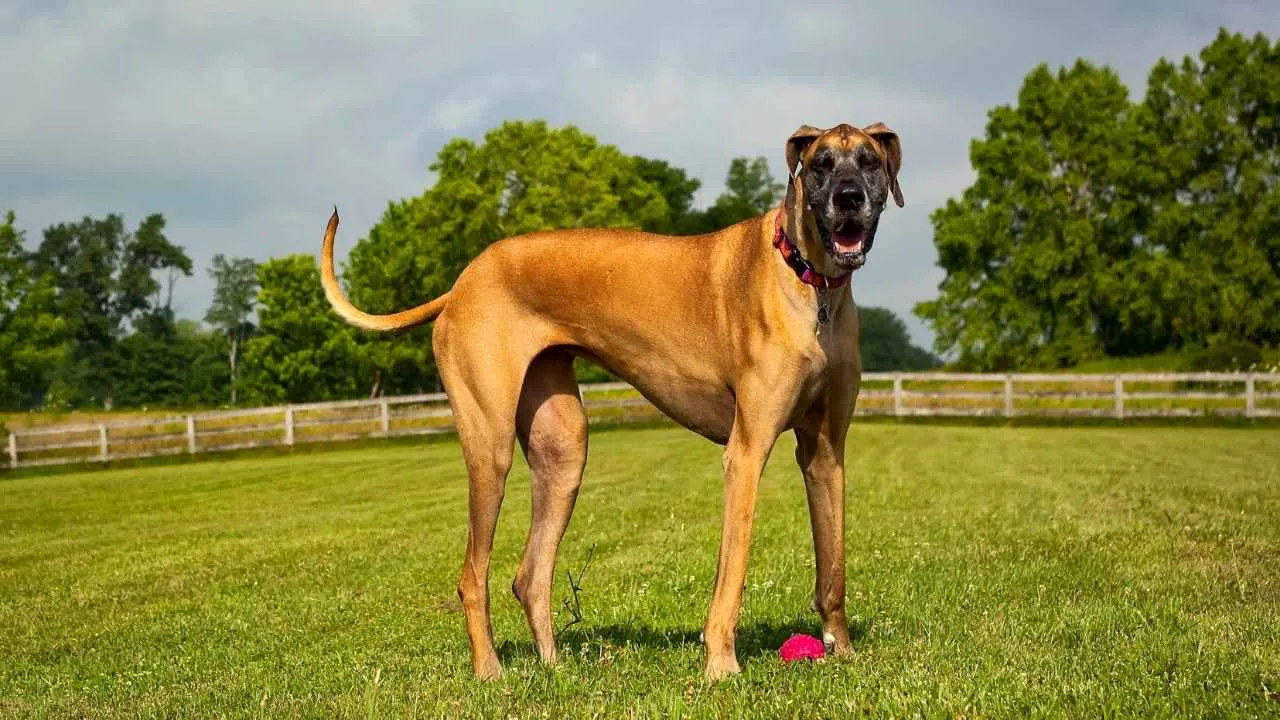
The Great Dane, often called the “Apollo of dogs,” is a magnificent and towering breed, originally bred for hunting boar and guarding estates, according to Hill’s Pet.
Their calm demeanor makes them great companions, but they retain an innate protective instinct, making them effective guard dogs when properly trained.
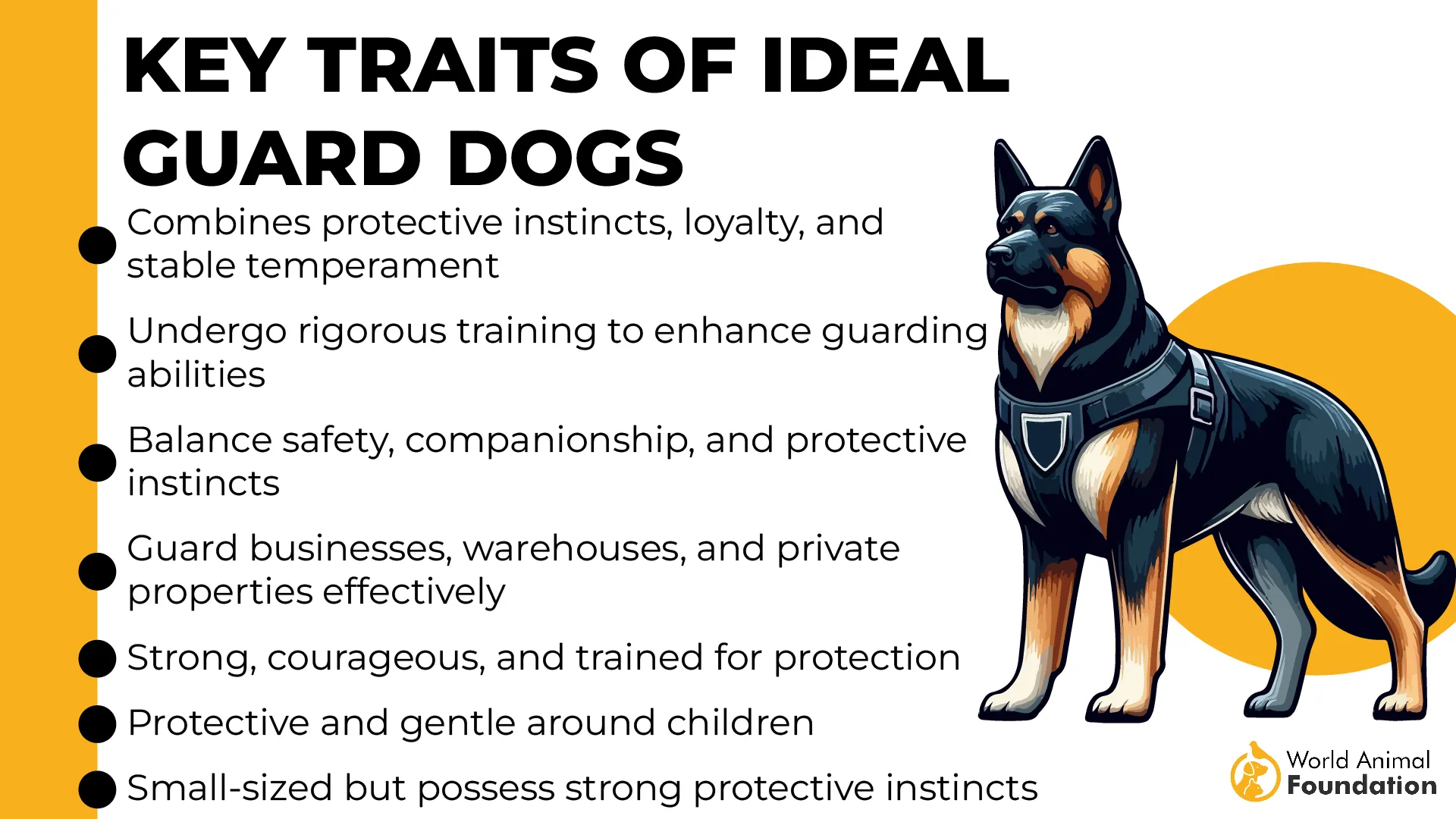
Training a Towering Guardian
Despite their massive size, Great Danes are intelligent and eager to please, which makes them relatively easy to train. Positive reinforcement methods work best, allowing these dogs to develop a confident, reliable guarding nature without becoming overly territorial or anxious.
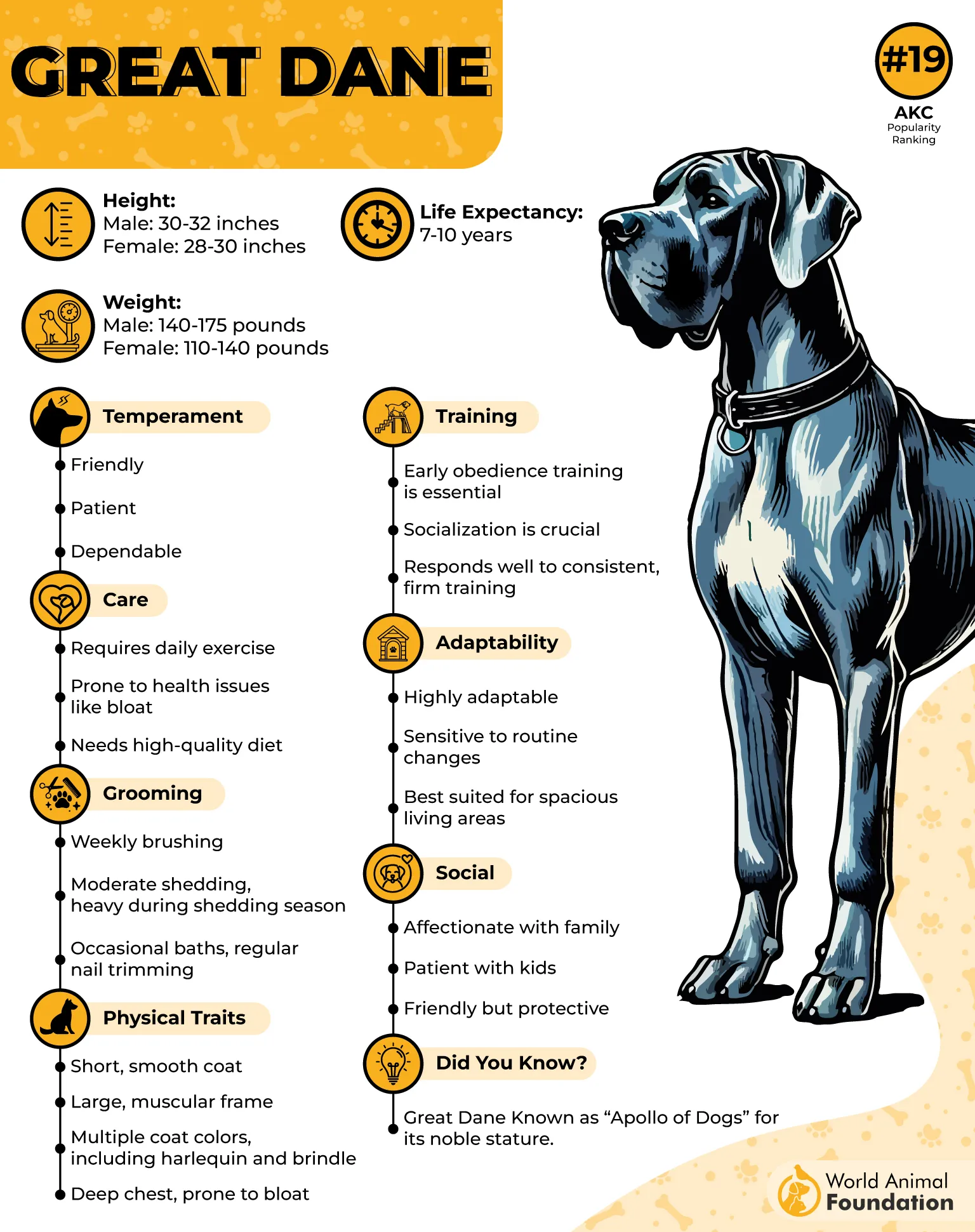
Low Maintenance, High Impact
When it comes to grooming, the Great Dane’s short coat requires minimal upkeep, though it should be brushed weekly. While not overly active, they still benefit from daily walks and playtime, which helps to keep them both physically fit and alert, ready to defend their home if necessary.
A Watchful Protector with a Heart of Gold
Their history as guardians and hunters makes them naturally vigilant, and when raised in a stable, loving environment, they can be both fierce protectors and loyal companions.
Their size alone often serves as an effective deterrent to potential intruders, solidifying their role as formidable yet loving guard dogs.
2. Irish Wolfhound
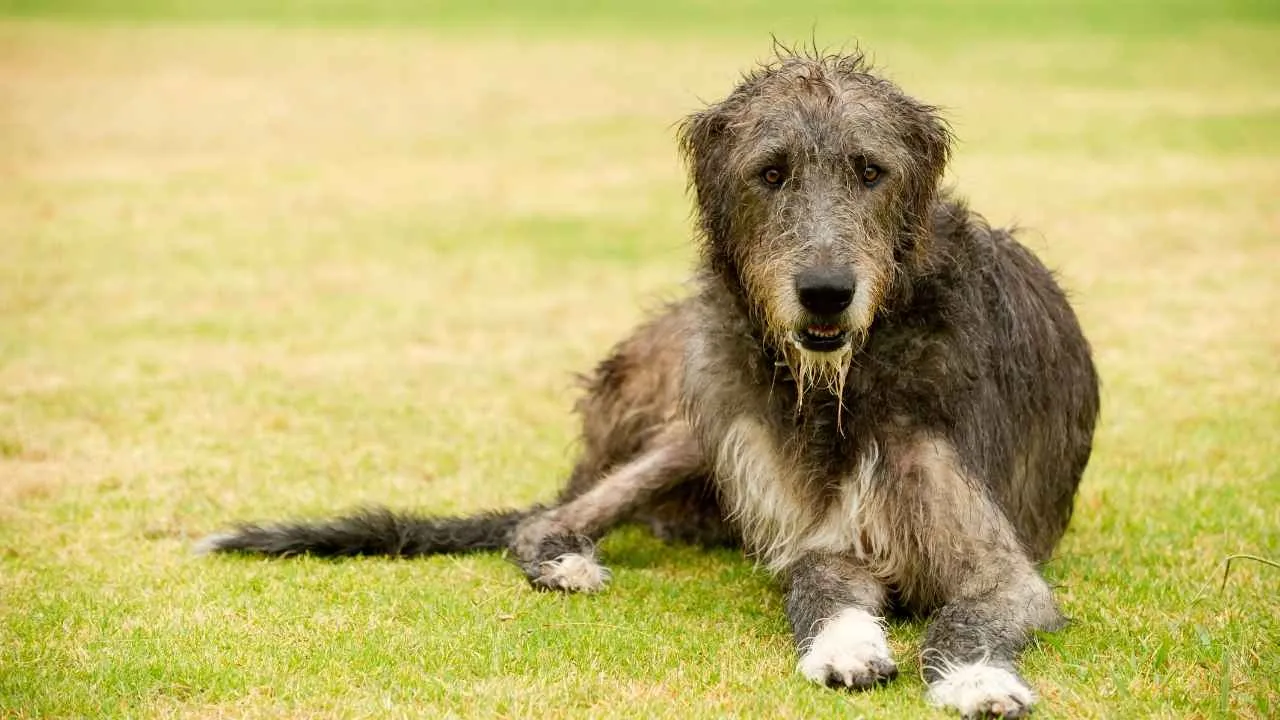
Despite their imposing stature, these dogs are gentle giants, exuding calmness and loyalty. Originally bred to hunt wolves and protect people, their sheer size alone often makes them a natural deterrent to any intruder, ensuring that their presence is felt even if they’re not actively guarding, according to the AKC.
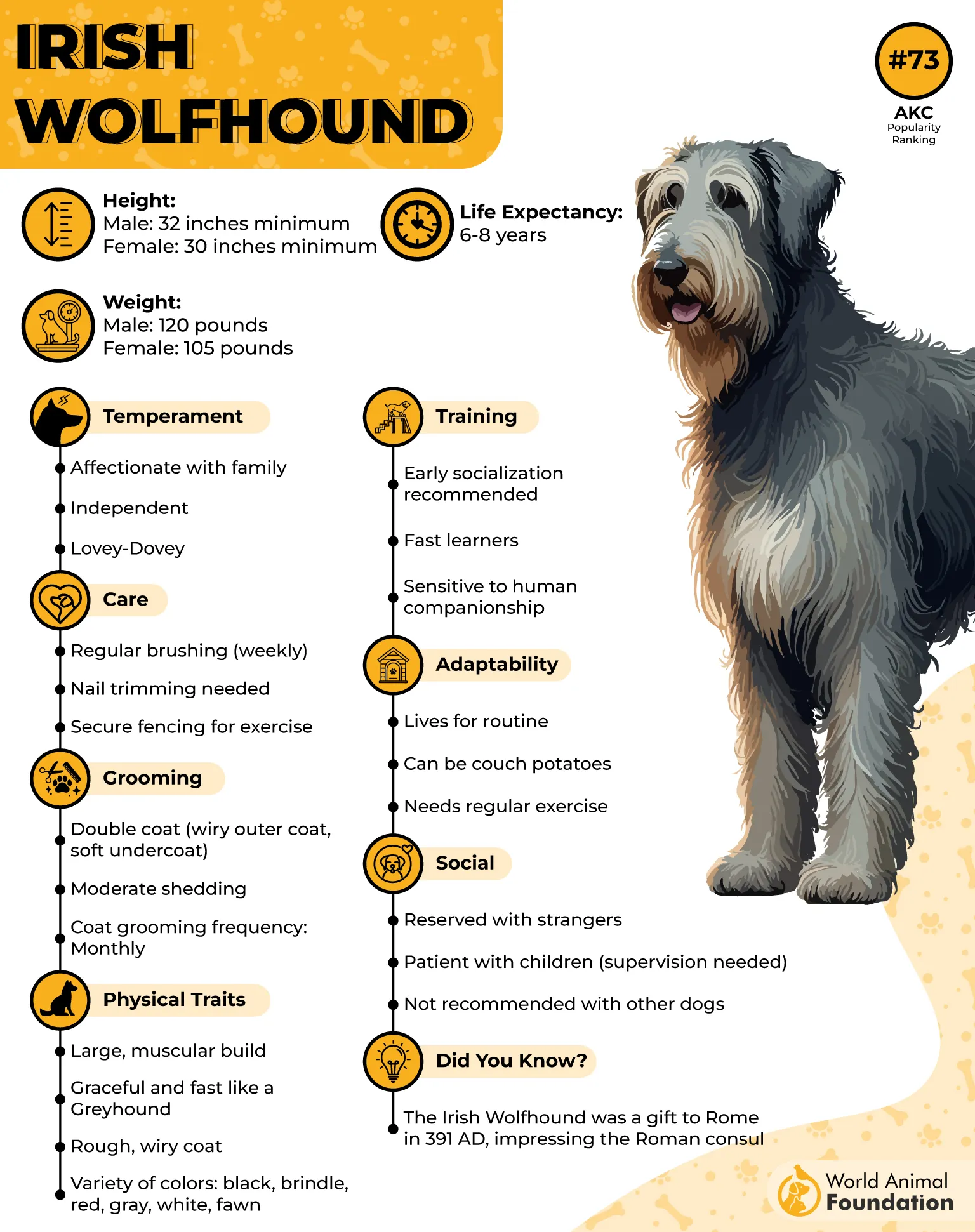
Training and Socialization for the Noble Protector
While not an aggressive breed, Irish Wolfhounds still retain a strong protective instinct. With their gentle nature, these dogs respond best to positive reinforcement techniques, and when trained properly, they can serve as reliable guardians, watching over their family with devotion and care.
A Grooming Ritual for the Giant
The grooming needs of the Irish Wolfhound are moderate, requiring weekly brushing to maintain their wiry coat.
While they don’t shed excessively, regular brushing ensures their coat stays clean and healthy. Their grooming ritual can be time-consuming, but their majestic presence makes it well worth the effort.
An Ancient Guardian with a Modern Touch
In ancient times, Irish Wolfhounds were fierce protectors, capable of battling wolves and even other large predators. Today, they are more docile but still maintain that protective streak. Their size and calm demeanor make them excellent watchdogs, often serving as silent sentinels to their families.
3. Mastiff
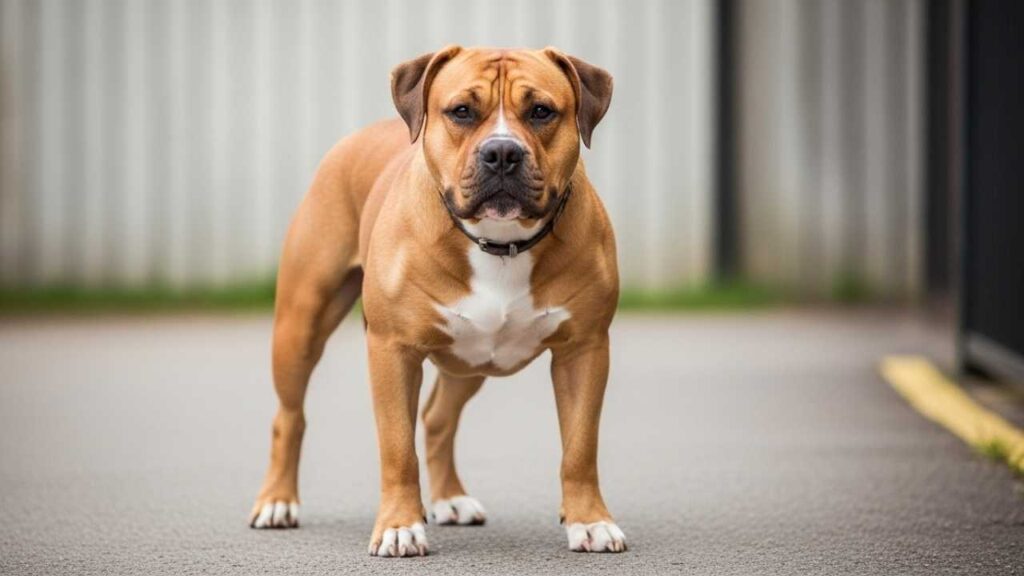
Mastiffs are colossal dogs with a calm temperament, originally bred for guarding and fighting. Despite their imposing size, they are known for their gentle nature and loyalty to family.
Their sheer presence is enough to deter most intruders, making them natural protectors. Extremely affectionate yet protective, they are ideal companions for those with space.
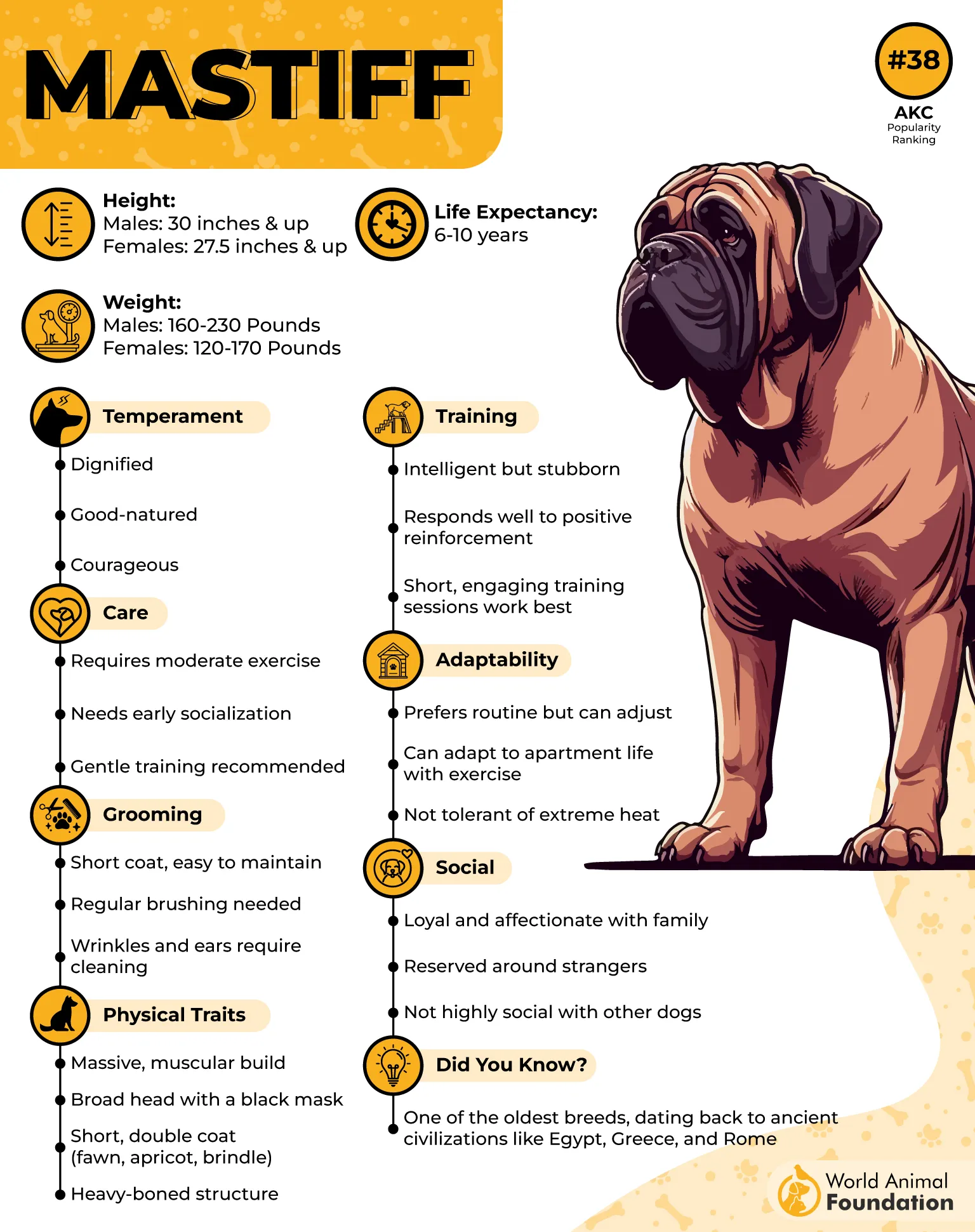
Training a Mighty Protector
While patient, Mastiffs require consistent training and early socialization to develop proper guarding skills. They are friendly to family but reserved with strangers. Training them can be slow but rewarding, as they thrive on affection and praise.
Low-Maintenance Grooming for a Large Breed
Mastiffs need minimal grooming, with just weekly brushing and regular face cleaning due to drool. Despite their imposing looks, their grooming needs are straightforward and manageable. Ensure they’re cool and comfortable for optimal health, as per PetMD.
A Calm, Loyal Protector
Though they may not be the most active, Mastiffs are dedicated to their families and have a strong instinct to protect.
Their gentle demeanor and loyalty make them fantastic guard dogs and companions. With a mix of power and patience, they’re a perfect match for those seeking a protective yet loving giant.
4. Akita
Akitas are independent, strong dogs with a reserved nature, making them exceptional guard dogs. Their loyalty is unmatched, and while they’re not overly social, they can be affectionate with their families.
Akitas require early socialization and early training to thrive in a home, particularly when it comes to interactions with other dogs.
Size & Space Needs
These large dogs require ample space to stretch out, making them better suited to homes with room to roam. Due to their size, transportation and exercise needs should be carefully considered. Despite their bulk, Akitas are low-maintenance in terms of exercise, needing only a daily walk and some playtime.
Grooming & Care
Akitas have moderate grooming needs, shedding heavily twice a year and requiring regular brushing to manage loose fur. Their thick, double coat helps them adapt to colder climates, but they struggle in hot weather, so be mindful of their temperature.
Training & Temperament
Known for their strong will, Akitas require consistent training and experienced handling. They’re intelligent but can be stubborn, so early socialization is crucial. While they may not be the best choice for families with small children or other pets, Akitas are loyal companions when properly trained.
5. Great Pyrenees
The Great Pyrenees is a calm, affectionate dog with a strong guarding instinct, bred to protect sheep in the Pyrenees Mountains. Pyrs are independent, gentle, and devoted to their families, but their guarding nature makes socialization and consistent training essential.
Size & Space Needs
With their impressive size and strength, Great Pyrenees require space to roam, making them better suited for suburban or rural homes.
They need regular grooming to manage their thick double coat, which sheds heavily once a year. Though they are generally low-energy indoors, they still need some exercise and mental stimulation to stay healthy, as per WebMD.
Temperament & Training
While friendly and affectionate, the Great Pyrenees can be stubborn and independent, making training a challenge. Though they may not excel in obedience competitions, they are loyal and protective, often content to relax and enjoy a peaceful routine with their family.
History & Origins
Bred as a livestock guardian breed in the Pyrenees Mountains, the Great Pyrenees has a rich history as a protector of flocks against predators like wolves and bears.
Known for their courage and patience, they were prized by French nobility and even earned the title “Royal Dog of France” in the 17th century. Their legacy as a hardworking guardian remains strong today.
6. Anatolian Shepherd Dog
The Anatolian Shepherd is a strong, independent working dog bred to guard livestock, as per Purina. With their short, dense coat, they are built to withstand extreme weather conditions, making them ideal for hot summers and freezing winters.
Temperament & Training
Anatolian Shepherds are loyal to their families but naturally suspicious of strangers, making early socialization and careful management essential. Their independent nature means they don’t always take cues easily, so a firm, consistent owner is necessary.
History & Origin
Originating from Anatolia, Turkey, the Anatolian Shepherd has been used for thousands of years to protect livestock from predators like wolves.
Their role in livestock protection was further cemented in the U.S. in the 1970s when they were utilized to protect livestock from wolves under the Endangered Species Act.
Exercise & Care
Anatolian Shepherds require moderate exercise, typically two walks a day and some yard play. Due to their guarding instincts, they need a confident and experienced owner who can provide proper structure and socialization. They thrive best in rural or suburban homes with plenty of space.
7. Tibetan Mastiff
Tibetan Mastiffs are massive dogs with a lion-like appearance, originally bred to guard homes and livestock in the Himalayas. Their temperament is aloof but loyal, protective of their family, and naturally suspicious of strangers.
Temperament & Training
These intelligent dogs can be independent and willful, not suitable for first-time owners, and require patience in training.
Socializing Tibetan Mastiffs from a young age is crucial to prevent overprotectiveness. They respond well to positive reinforcement, but consistency and firm boundaries are essential.
Exercise & Care
While calm indoors, Tibetan Mastiffs are more active at night and need at least an hour of exercise daily, preferably split into multiple sessions. They also require regular grooming, especially during shedding seasons when their dense fur can create a lot of fluff.
Living Requirements
Tibetan Mastiffs need space to roam and are best suited for homes with large, secure yards. They are not ideal for apartment living and may become destructive if confined. With proper training and space, they are gentle giants who bond deeply with their families.
Conclusion
In conclusion, large dog breeds are often regarded as the best guard dogs. Their strong protective instincts, loyalty, and ability to form strong bonds make them excellent guard dogs for families. With proper training and early socialization, they can be both loving companions and vigilant protectors.
These family dogs were originally bred for guarding duties and have sharp instincts. They require experienced owners who can provide consistent training and enough space for these large dogs to thrive.
While these giant breeds are excellent family pets, their protective nature requires careful management. Proper socialization and regular exercise are essential for maintaining a balanced temperament. With the right care, these guard dog breeds can offer security and loyal companionship, making them ideal for families and those in need of protection dogs.


